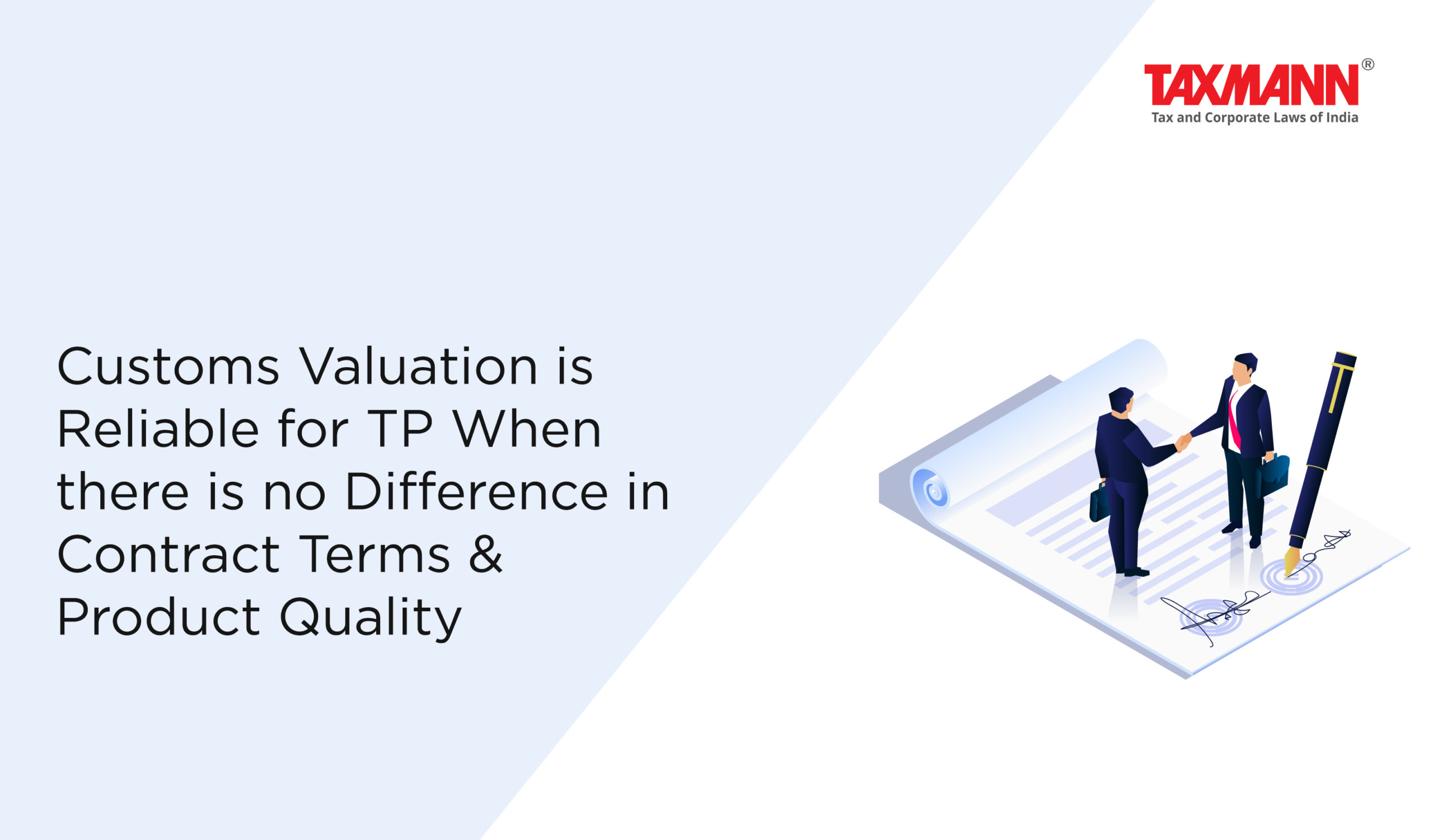Customs Valuation is Reliable for TP When there is no Difference in Contract Terms & Product Quality
- Blog|News|Transfer Pricing|
- 3 Min Read
- By Taxmann
- |
- Last Updated on 20 June, 2023

Case Details: Louis Dreyfus Company India (P.) Ltd. v. DCIT - [2023] 150 taxmann.com 392 (Delhi-Trib.)
Judiciary and Counsel Details
-
- Anil Chaturvedi, Accountant Member & Yogesh Kumar U.S., Judicial Member
- Ravi Sharma, Adv. & Ms Shruti Khimta, AR for the Appellant.
- Rajesh Kumar, [CIT]-DR for the Respondent.
Facts of the Case
Assessee-company made international transactions relating to import and export of oil, grain and cotton during the relevant assessment year. In the Transfer Pricing (TP) study report containing prices published by industry associations and brokerages along with third party transactions, assessee used Comparable Uncontrolled Price (CUP) as the most appropriate method (MAM).
Transfer Pricing Officer (TPO) rejected the TP study report submitted. However, he accepted CUP as MAM after making verification from tire data collected from the Customs department and proposed adjustment. TPO observed that a gap could exist between the contract date and actual contract realization date. Ultimately, TPO proposed ar. adjustment and made additions to the assessee’s income.
The Dispute Resolution Panel (DRP) rejected objections of the assessee against the use of customs data under CUP. The matter reached before the Delhi Tribunal.
ITAT Held
The Tribunal held that as per Customs Valuation Rules, the comparison was made on the transaction value/tariff value of similar/identical products at the time of import/export. A gap could exist between the contract date and actual contract realization date. The OECD Commentary on TP guidelines also allow for the adoption of a price-setting date which is different from the stated contract date.
Under such circumstances, the prices of comparable products on their respective invoice/shipment date as considered in customs valuation would yield a more reliable result. Customs data serves as a more reliable CUP as it compares the value of identical or similar goods imported/exported at or around the same time.
It is also observed that the customs data at the port of shipment/delivery would better reflect the price of the commodity as it is inclusive of interest, insurance, freight costs, storage expenses, foreign currency terms, country of origin charges, transportation charges from place of origin to place of destination, port charges, customs clearance charges etc. Such data would be a more reliable indicator of the uncontrolled arm’s length transaction value (inclusive of the relevant costs) of identical or similar transactions between independent parties.
Since, prices published by industry associations or industry reports and third party transactional data also include other related party transactions which may influence the average prices which may not reflect the accurate price for benchmarking.
List of Cases Reviewed
-
- Coastal Energy (P.) Ltd. v. Asstt. CIT [2011] 12 taxmann.com 355/46 SOT 286 (URO) (Chennai – Trib.) (para 21)
- Rohm and Haas India (P.) Ltd. v. Asstt. CIT [2019] 112 taxmann.com 90 (Mum. – Trib.) (para 22)
- Tilda Riceland (P.) Ltd. v. Asstt. CIT [2014] 42 taxmann.com 400/64 sot 61 (Delhi. – Trib.) (para 23) followed.
- CIT v. Adani Wilmar Ltd. [2014] 45 taxmann.com 365/224 Taxman 51/363 ITR 338 (Guj.) (para 21) distinguished. (Delhi. – Trib.) (para 21),
List of Cases Referred to
-
- Cognizance for Extension of Limitation, In re [2021] 127 taxmann.com 72/167 SCL 99 (SC) (para 3)
- Louis Dreyfus Commodities India (P.) Ltd. v. Dy. CIT [2018] 92 taxmann.com 261 (Delhi – Trib) ( para 8)
- CIT v. Adani Wilmar Ltd. [2014] 45 taxmann.com 365/224 Taxman 51/363 ITR 338 (Guj.) (para 8)
- Sinosteel India (P.) Ltd. v. Dy. CIT [2013] 40 taxmann.com 240/[2014] 147 ITD 313 (Delhi – Trib.) (para 20)
- Coastal Energy (P.) Ltd. v. Asstt. CIT [2011] 12 taxmann.com 355/46 SOT 286 (URO) (Chennai – Trib.) (para 21)
- Rohm and Haas India (P.) Ltd. v. Asstt. CIT [2019] 112 taxmann.com 90 (Mum. – Trib.) (para 22)
- Tilda Riceland (P.) Ltd. v. Asstt. CIT [2014] 42 taxmann.com 400/64 SOT 61 (Delhi. – Trib.) (para 23).
Disclaimer: The content/information published on the website is only for general information of the user and shall not be construed as legal advice. While the Taxmann has exercised reasonable efforts to ensure the veracity of information/content published, Taxmann shall be under no liability in any manner whatsoever for incorrect information, if any.

Taxmann Publications has a dedicated in-house Research & Editorial Team. This team consists of a team of Chartered Accountants, Company Secretaries, and Lawyers. This team works under the guidance and supervision of editor-in-chief Mr Rakesh Bhargava.
The Research and Editorial Team is responsible for developing reliable and accurate content for the readers. The team follows the six-sigma approach to achieve the benchmark of zero error in its publications and research platforms. The team ensures that the following publication guidelines are thoroughly followed while developing the content:
- The statutory material is obtained only from the authorized and reliable sources
- All the latest developments in the judicial and legislative fields are covered
- Prepare the analytical write-ups on current, controversial, and important issues to help the readers to understand the concept and its implications
- Every content published by Taxmann is complete, accurate and lucid
- All evidence-based statements are supported with proper reference to Section, Circular No., Notification No. or citations
- The golden rules of grammar, style and consistency are thoroughly followed
- Font and size that’s easy to read and remain consistent across all imprint and digital publications are applied





